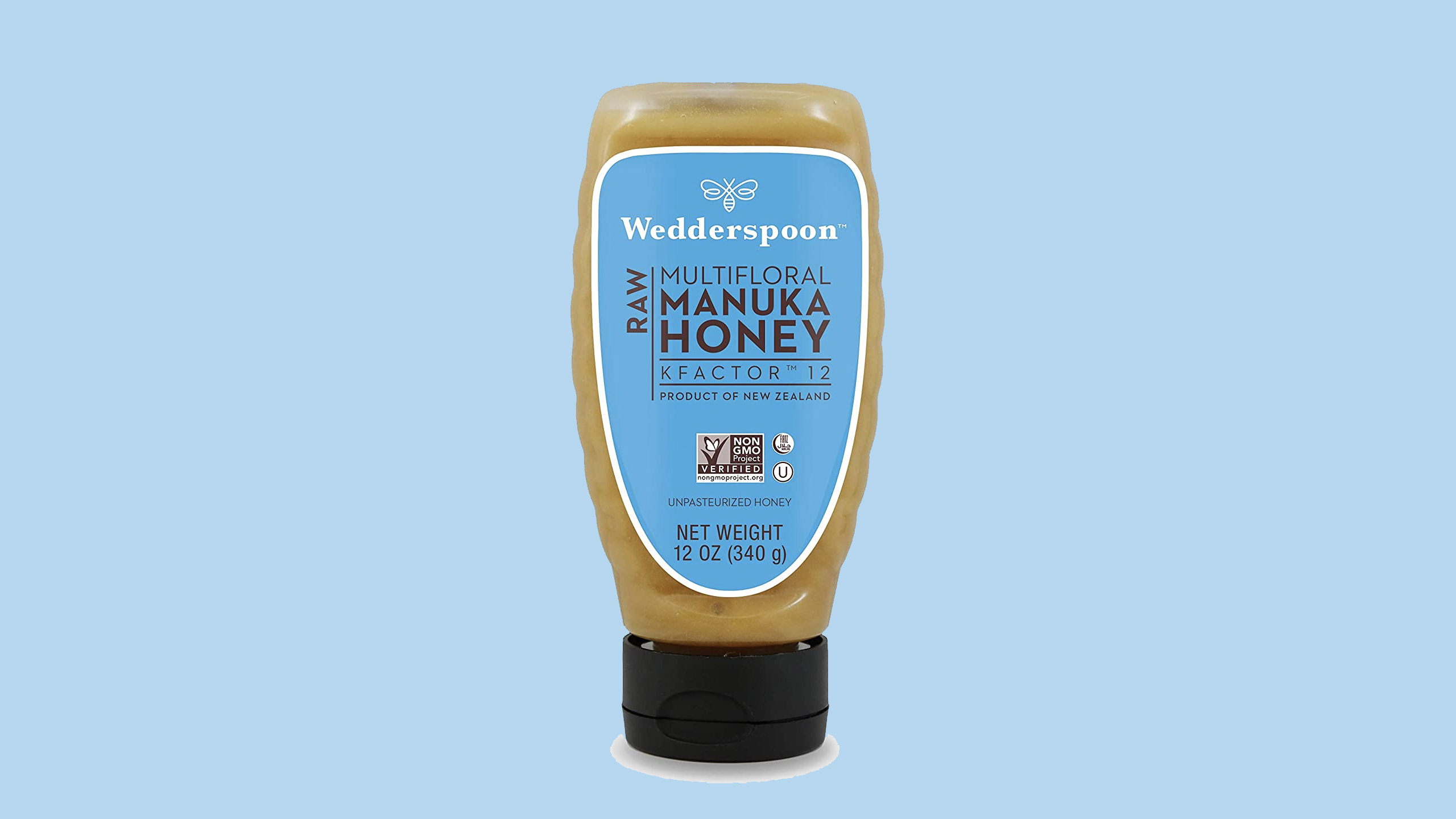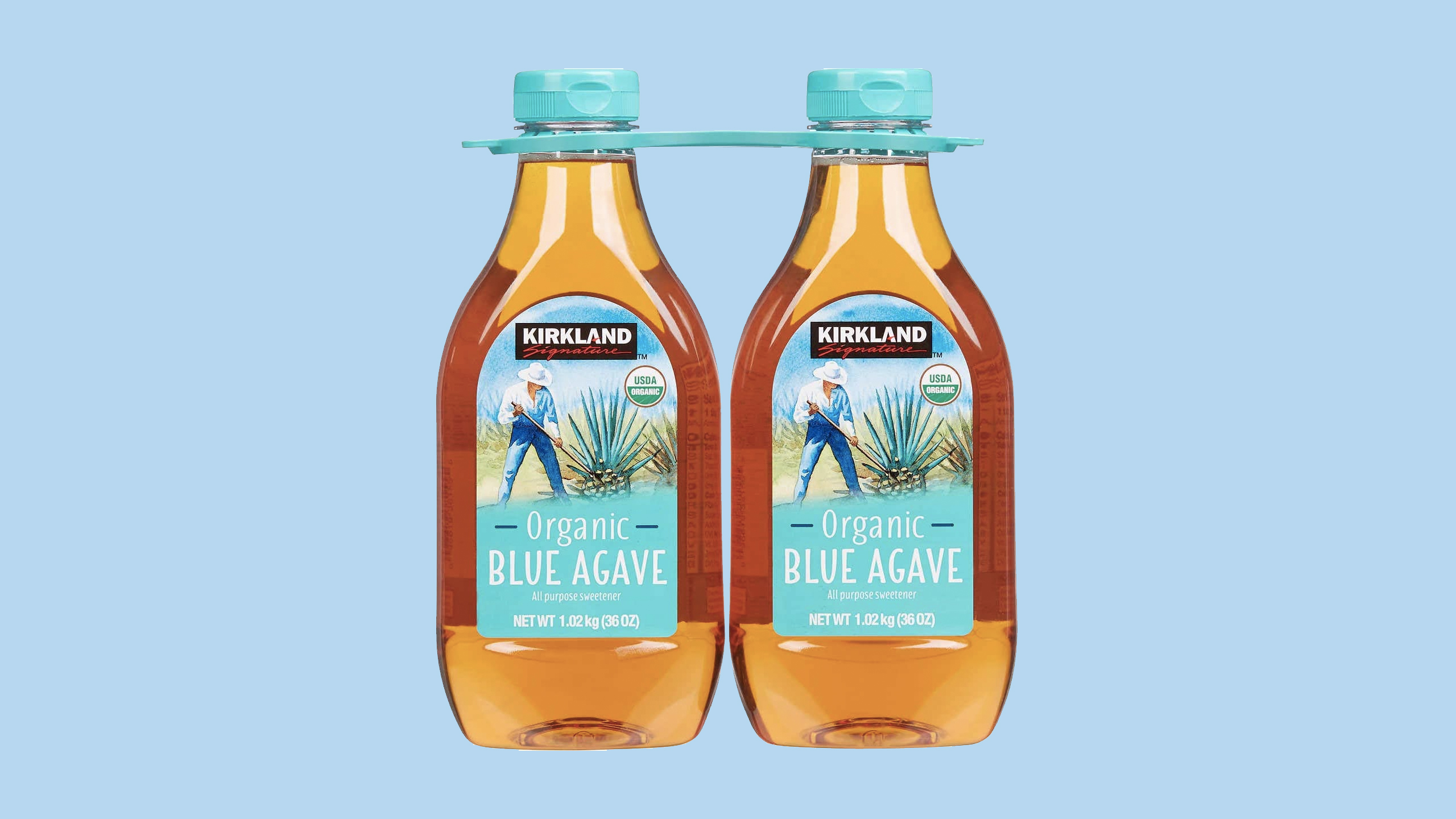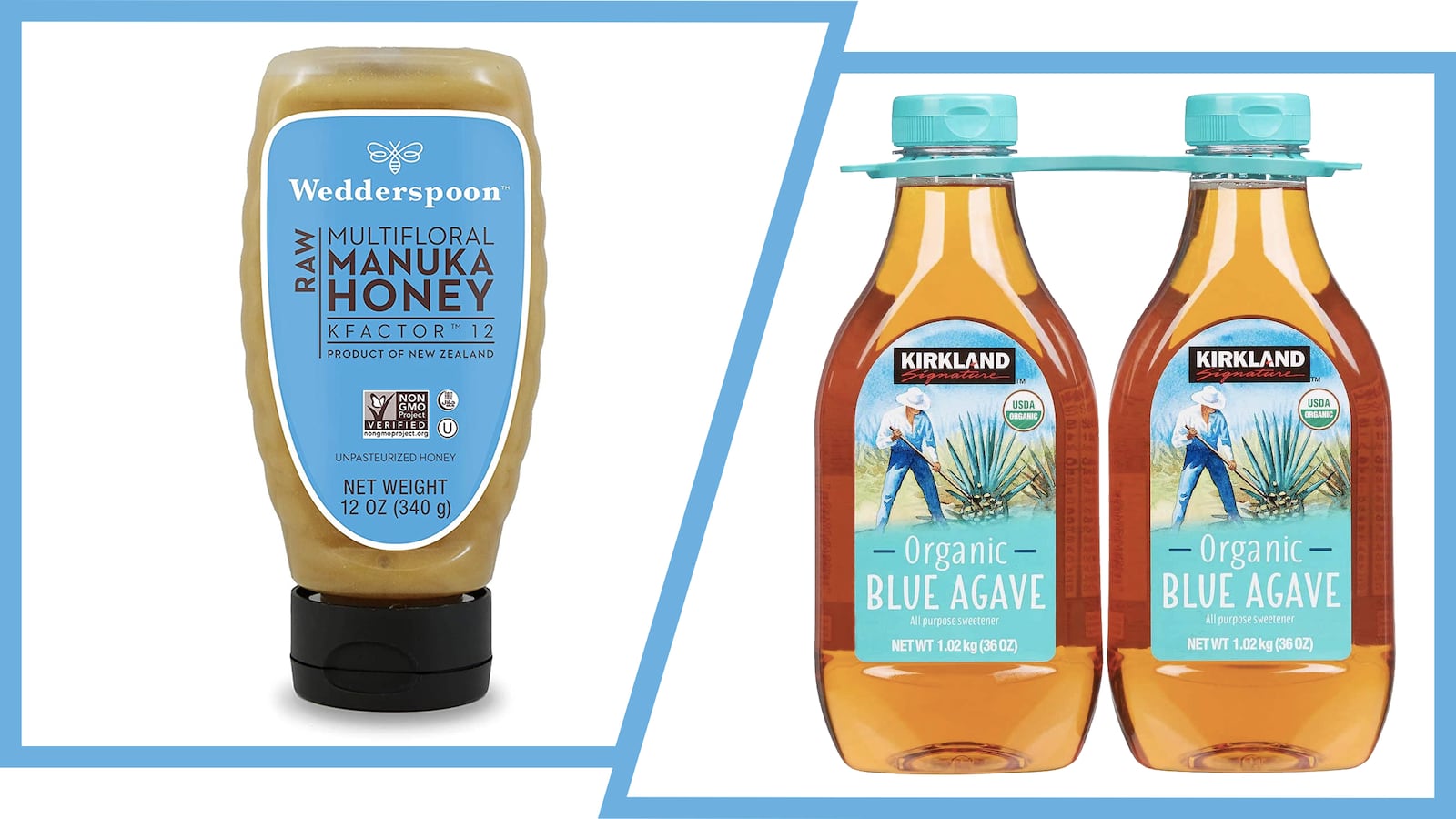Now that I’m homebound, I’ve been experimenting with more ingredients than ever before. I mean—what else is there to do but to make jars upon jars of homemade salad dressing and smoothies using every condiment in your fridge like some manic mad scientist? That’s when I decided to get nerdy about what I was actually using most frequently—both honey and agave. The fact that I had been using them interchangeably might not have been the appropriate culinary protocol given at how different they are. Let’s take a look at the ways in which they differ.
What Is Honey?
As trendy as high-quality honey has become, you won’t see any vegan influencers posting about it any time soon. “Some vegans consider honey non-vegan because it's produced from the labor of bees,” says Patricia Bannan, MS, RDN, dietitian-nutritionist and healthy eating expert. “They believe that exploiting the labor of bees and then harvesting their energy source is immoral. They also believe that the practices of large-scale beekeeping operations can harm or kill the bees.”
There’s a reason we dip the apples in the honey during Rosh Hashanah for a sweet new year: it’s so sweet and satisfying it’ll pierce your tongue (but, like, in a good way). According to the journal Integrative Medicine Insights, it’s made when Apis mellifera bees collect nectar from floral nectar or aphid (insect) secretions. The bees then store their honey in wax-like containers called honeycombs.
DIFFERENT HONEY VARIETALS
Like wine, honey boasts a different taste and appearance depending on its geographical location, climate, and harvesting and storage techniques. (Seriously, impress your friends with a honey tasting). Here’s what you can expect at the grocery or specialty foods store, according to Bannan.
Clover: With its rich golden color and mild flavor, this honey variety made of clover flowers is one of the better known types.
Avocado: Like the avocado plant from which it blooms, this honey has a buttery taste and dark color.
Tupelo: This Florida-derived honey is light golden in color with a distinctive yet mild taste.
Manuka: More than just a pretty face, this gold standard of honey is made from the New Zealand-based manuka plant. Due to its higher concentration of the active organic compound methylglyoxal, it boasts numerous health benefits including wound healing and tissue repair
Not all honey is of the same quality either. Certain low-grade honey contains granulation composed of small particles of leftover honeycomb, which can lead to crystallization, according to the United States Department of Agriculture. Over time, granulation can harden the honey leading to chunky, coarse crystals that make it difficult to spread, scoop or stir.
Honey ranges in color on the Pfund scale from water white to dark amber, with the lighter varieties seen as higher quality. In general you want to look for honey marked Grade A, which earns its score by being translucent and absent of any visible and sensory defects.
HONEY HEALTH BENEFITS
Honey is often stirred into tea, smoothies, and hot water for its purported medicinal benefits, but these claims might be overblown, according to Bannan. It only contains trace minerals like copper, iron and magnesium, and a serving won’t nearly cover your recommended daily intake. Honey does contain antibacterial, anti-inflammatory, and antimicrobial properties, but it won’t singlehandedly cure you of the flu or a sore throat either. Your best defense against illness is to stay hydrated (since water helps reduce congestion and allows the kidneys to flush out waste, according to Michigan State University). And if adding honey to your tea encourages you to drink up, then go ahead and treat yourself to a heaping teaspoon or two. “The bottom line is that honey is still a sweetener, and contains roughly the same amount of calories as table sugar. Honey should be enjoyed in moderation for its flavor and sweetness, any nutritional or health components are just a bonus,” says Bannan.
OUR PICK:

With its naturally occurring enzymes and comforting caramel flavor, you’ll never have to open and close a jar lid with sticky fingers again thanks to its BPA-free squeeze bottle.
What Is Agave?
While documentation in Spanish art illustrates honey harvesting as far back as 8,000 years ago, agave is a relatively newer trend, with its official entrance into the American market at an Anaheim, California health trade show in 1995. Affectionately referred to as the “century plant” for its rare blooms, early documentation in Mexican history suggests the plant’s uses range from medicine to needles, clothes, and of course, sweet nectar. “Agave syrup is made from the leaves of the agave plant. The plant is first cut and pressed to extract the sugary sap. The refining and processing of agave tends to destroy much of the beneficial health effects,” says Bannan. There are 200 known agave succulent plant varieties, which can reach upwards of eight feet tall and 100 pounds.
Though the plant might look intimidating in size, using its nectar in everyday cooking is far from it. Since becoming vegan, I’ve seamlessly incorporated it into smoothies and dessert recipes as I, admittedly, struggle to reduce my artificial sweetener intake.
DIFFERENT AGAVE VERTIALS
According to Bannan, agave can boast several different characteristics depending on how it’s harvested.
Light: Light and mild in both flavor and color.
Amber: Darker in color with a more caramel flavor.
Dark: Strong in caramel flavor and color.
Raw: Light in color and flavor, it’s produced at a lower temperature so as not to destroy its naturally occurring enzymes.
Blue: Made from the blue agave plant, it’s light in flavor with a medium-golden hue. The blue agave plant produces a rich, sweet nectar, which is also used to make tequila.
AGAVE HEALTH BENEFITS
The agave plant on its own does contain numerous health benefits. Unfortunately, the process of pulling fructans from the nectar eliminates them, according to the Journal of Agricultural Food Chemistry. “One of the reasons agave is popular is the fact that it’s lower on the glycemic index as compared to other sweeteners,” says Bannan, adding that it ‘s likely to raise blood sugar at a slower rate. Since agave is primarily made up of fructose instead of sucrose—and high amounts of fructose in the diet may play a role in weight gain and LDL (bad) cholesterol levels—agave should be enjoyed for its flavor rather than health benefits, just like honey, says Bannan.
OUR PICK:

Many brands use fillers or extra sugar to pad their product, but this contains 100 percent pure blue agave. If organic is something that matters to you, this is a great bet.
HONEY AND AGAVE FACE-OFF:
Flavor profile:
“The main difference between agave and honey when cooking is their flavor profile,” says Bannan. “Honey has a distinct, and stronger flavor, while agave is more neutral. If you want the flavor of honey as part of the dish, use honey. If you simply want a sweet element that doesn't have an overpowering flavor, use agave.”
Texture:
While both sweeteners boast a syrup-like consistency no matter the variety, agave tends to be thinner than honey, making it generally easier to measure accurately, stir into liquid recipes like salad dressings and drinks.
Shelf life:
Unopened, Bannan says honey can last for decades, but is subject to quality changes once opened and stored. “Generally, a shelf life of one to two years is stated on packages of honey to account for these changes in quality,” she says. Most agave nectars, however, have a shelf life of two years.
Scouted selects products independently and prices reflect what was available at the time of publish. Sign up for our newsletter for more recommendations and check out our coupon site for more deals. If you buy something from our posts, we may earn a small commission.






